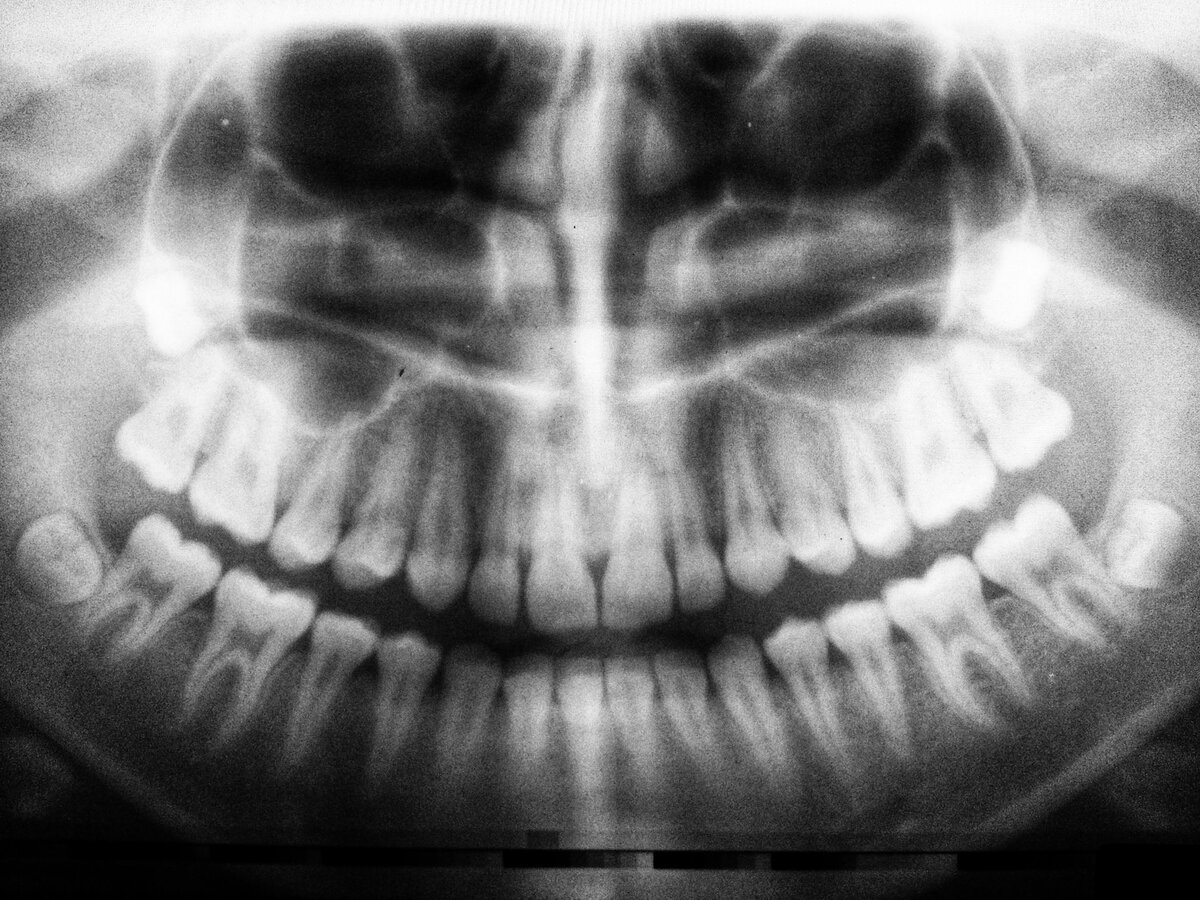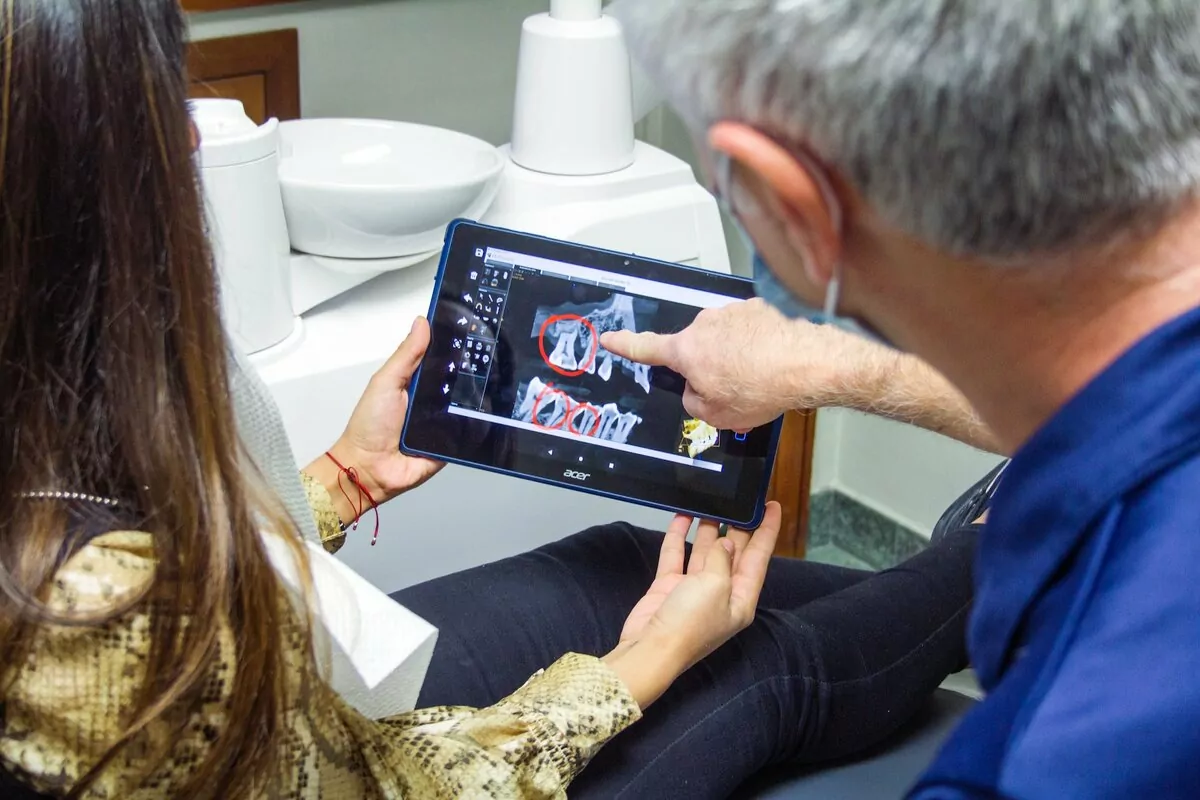Ectopic teeth are teeth that grow in the wrong place, not following the normal sequence or position in the dental arch. This unusual growth can lead to discomfort, affect your bite, or cause cosmetic concerns. Understanding why teeth grow ectopically is the first step in addressing any potential dental issues that may arise from this condition. While relatively rare, recognizing and treating ectopic teeth early can help prevent more serious dental problems in the future.
On this page:
Recognizing Symptoms of Teeth Growing in Weird Places
Hyperdontia is a dental condition characterized by the development of extra teeth beyond the standard set. These supernumerary teeth can emerge in areas where tooth growth is not typically expected. Recognizing the symptoms of hyperdontia is crucial for early intervention and management.
The most noticeable sign of hyperdontia is the appearance of extra teeth. These can sometimes be visible when they erupt through the gums, but in other cases, they may remain hidden beneath the gum line. In children, extra teeth may be detected when their primary or permanent teeth are coming in. For adults, the discovery may occur during routine dental exams or when addressing other dental concerns.
Besides the physical presence of additional teeth, hyperdontia may present other symptoms. These include discomfort or a sensation of pressure in the gums or jaw, which is often the result of overcrowding. This overcrowding can lead to displacement of regular teeth, resulting in misalignment or irregular spacing. Some individuals might experience delayed eruption of their normal teeth or notice that their teeth do not align properly when biting down.
In some cases, hyperdontia can cause complications with chewing or speaking if the extra teeth obstruct normal mouth function. It can also contribute to oral hygiene challenges. The crowding and misplacement of teeth create nooks and crannies that are difficult to clean, increasing the risk of cavities and gum disease.
It’s important to note that not all supernumerary teeth cause symptoms or problems. Some people may have hyperdontia without experiencing any discomfort or dental issues. However, when symptoms do arise, they typically prompt a visit to a dental professional for assessment and appropriate care.
Exploring Causes Behind Teeth Growing in Wrong Places
The occurrence of teeth growing in weird places, often identified as ectopic eruption, can be both puzzling and concerning. The causes behind this abnormal tooth development are complex and varied. Genetics play a crucial role; the instructions for tooth positioning are encoded in our DNA, and any variations can lead to misplacement. If family history includes dental anomalies, the likelihood of similar issues occurring in offspring increases.
In addition to genetics, environmental factors during critical periods of dental development can influence tooth placement. For example, trauma to baby teeth or the jaw can disrupt the natural growth path of the underlying permanent teeth. This might cause them to emerge in unexpected locations.
Habits during infancy and early childhood, such as prolonged pacifier use or thumb sucking, can also exert undue pressure on developing teeth and jaws, potentially leading to misalignment. Furthermore, nutritional deficiencies during the tooth formation stages, particularly a lack of essential vitamins and minerals, may impair normal dental development.

Another contributing factor can be the premature loss of baby teeth, which serve as placeholders for adult teeth. If a baby tooth falls out too soon, due to decay or injury, the neighboring teeth may shift into the space, leaving insufficient room for the permanent tooth to emerge properly.
Certain syndromes and medical conditions are associated with misplaced tooth development. For instance, cleft lip and palate, a congenital deformity affecting the upper lip and roof of the mouth, can alter the landscape of the oral cavity, leading to ectopic eruptions.
Can Teeth Grow Anywhere on the Body? Diagnosing Dental Anomalies
Dentists have the expertise to spot these dental anomalies during regular check-ups. They may notice teeth that are misaligned, have unusual spacing, or in rare cases, have erupted outside of the normal dental arch, an issue referred to as ectopic eruption.
When a dentist suspects an anomaly, they may use various diagnostic tools to get a clearer picture of what’s happening below the surface. The most common tool is a dental X-ray, which can reveal the positions of unerupted or hidden teeth. In some cases, a panoramic radiograph, which provides a complete view of the upper and lower jaws, teeth, and sinuses, may be necessary to assess the full extent of the dental irregularities.
For a more detailed view, a Cone Beam Computed Tomography (CBCT) scan might be used. This type of imaging offers a 3D representation of the teeth and jaw, allowing dentists to see the precise location of the ectopic teeth and their relationship to other structures in the mouth.
If a dentist identifies the phenomenon of teeth growing in wrong places, they will examine the patient’s dental history, health records, and inquire about any discomfort or functional issues during chewing or speaking. They’ll also look for signs of crowding, misalignment, or damage to adjacent teeth, which can occur when a tooth doesn’t emerge where it’s supposed to.
Once the assessment is complete, the dentist can determine the nature of the anomaly—whether it’s a straightforward case of a single ectopic tooth or a more complex condition like hyperdontia, where multiple extra teeth are present. From there, the dentist can work with the patient to create a personalized treatment plan.
Evaluating Treatment Options for Ectopic Teeth
Orthodontists often lead the way, considering factors like the tooth’s position, the patient’s age, and overall dental health. In some instances, the ectopic tooth may be left in place if it isn’t causing harm or discomfort. However, if it’s affecting surrounding teeth or has the potential to cause problems, removal might be necessary.
Braces or other orthodontic devices may be used to guide the remaining teeth into their proper positions once an ectopic tooth is taken out. This helps in maintaining a healthy bite and alignment. Some patients might need a dental implant or bridge if the ectopic tooth has left a gap that could cause shifting of the adjacent teeth.
In cases where an ectopic tooth is discovered early in children, a wait-and-see approach might be adopted. Dentists monitor the tooth’s progress to determine if it will naturally correct its position or if intervention is needed.

For those experiencing discomfort or functional issues, pain management, and measures to restore functionality are priorities. This can include adjustments to dental appliances, prescription of pain relievers, or recommending soft foods during particularly tender periods.
Dentists also consider the aesthetic consequences of ectopic teeth. If visible teeth are affected, options like veneers or crowns are discussed to ensure the patient’s smile remains bright and confident.
Ultimately, the goal is to create a treatment plan that considers both the physical health of the patient’s mouth and the emotional well-being that comes with a confident, pain-free smile. With advances in dental technology, customized solutions are more accessible, aiming for minimal discomfort and optimal long-term outcomes.
Living with Hyperdontia Managing Day-to-Day Challenges
The condition where can teeth grow anywhere on the body may lead to discomfort during normal activities such as eating, speaking, and maintaining oral hygiene. The additional teeth can crowd the mouth, affecting alignment and bite, which may lead to difficulty in chewing food properly. This can cause nutritional concerns if individuals aren’t able to eat a balanced diet due to discomfort or the inability to process certain foods.
Speaking may also be impacted, as the extra teeth can affect the way sounds are formed in the mouth, potentially leading to speech impediments. It’s important for individuals with hyperdontia to work with speech therapists if they notice changes in their speech patterns, as early intervention can help mitigate these issues.
Maintaining oral hygiene takes on an added level of importance for those with hyperdontia. The presence of extra teeth can create hard-to-reach areas in the mouth, increasing the risk of plaque buildup, tooth decay, and gum disease. Regular brushing and flossing are critical, and using interdental brushes or water flossers may help in cleaning tight spaces between teeth.
Social interactions and self-esteem may also be affected by hyperdontia. Visible extra teeth or dental irregularities may cause self-consciousness or anxiety in social situations. Finding a supportive community, whether online or in person, can provide a space where experiences and coping strategies are shared, thus reducing feelings of isolation.
Regular dental checkups are crucial for managing hyperdontia. Dentists can monitor the condition, recommend appropriate dental hygiene practices, and intervene when necessary to prevent complications.
Advancements in Dental Care for Atypical Tooth Growth
Innovative imaging technology, like 3D Cone Beam Computed Tomography (CBCT), allows dentists to obtain high-resolution images of the jaws and teeth. This level of detail helps in accurately diagnosing and formulating a precise treatment plan for atypical tooth growth.
In the field of orthodontics, there are new, less invasive options for managing ectopic teeth. Traditional braces have been improved with customization, leading to shorter treatment times and less discomfort. Clear aligners, an alternative to braces, can now be used in some cases of ectopic teeth, offering a nearly invisible treatment method.
Advancements in dental surgery have minimized the risks and improved the outcomes of procedures to remove or reposition ectopic teeth. The use of piezosurgery, which utilizes ultrasonic vibrations to cut bone without damaging soft tissue, has become more prevalent. This technique results in less swelling and pain during recovery.
For non-extraction cases, advances in regenerative dentistry have opened up the possibility of guiding the growth and eruption of teeth into their proper positions. Using growth factors and stem cell technology, researchers are finding ways to manipulate the tissues around teeth, potentially reducing the need for surgical interventions.
When to Seek Professional Dental Advice
If a person notices unusual discomfort or sees a tooth emerging in an area where teeth don’t typically develop, it’s important to schedule a dental appointment. Common signs that warrant professional assessment include pain, difficulty with biting or chewing, or a noticeable disruption in the alignment of teeth.
Children, in particular, should receive prompt attention if there are signs of extra or misplaced teeth as this can affect the growth patterns of their permanent teeth. For adults, any new tooth-like growth should be evaluated to rule out other dental issues or conditions.
Regular dental check-ups are vital for maintaining oral health and can help in detecting abnormal tooth development early on. During these visits, dentists use tools and expertise to monitor tooth eruption and alignment. However, if there are specific concerns between scheduled check-ups, it’s better not to wait.
An additional reason to seek immediate dental advice is if ectopic teeth lead to complications such as infection, cysts, or damage to adjacent teeth. These conditions can escalate quickly and may require more complex treatment if not addressed promptly.
If someone is already aware of having extra teeth and experiences a sudden change, like increased pain or swelling, it is a clear signal to get in touch with a dental professional. Dental experts can provide guidance, reassurance, and intervention to manage the condition effectively, ensuring oral health is maintained and future complications are minimized.
Prevention and Early Detection Strategies
While it’s not always possible to prevent ectopic teeth, maintaining regular dental check-ups is critical for early detection. Dentists can spot potential issues through routine exams and X-rays before they become problematic. Good oral hygiene practices, including brushing twice a day, flossing daily, and using mouthwash can also support overall dental health, which may reduce the risk of abnormal tooth development. For parents, it’s important to monitor children’s teeth as they develop and to seek a dentist’s opinion if anything unusual is noticed. Early orthodontic evaluations, typically recommended around the age of seven, can help identify and address any dental anomalies promptly, ensuring a healthier smile.
